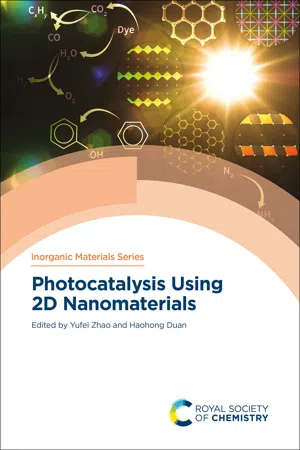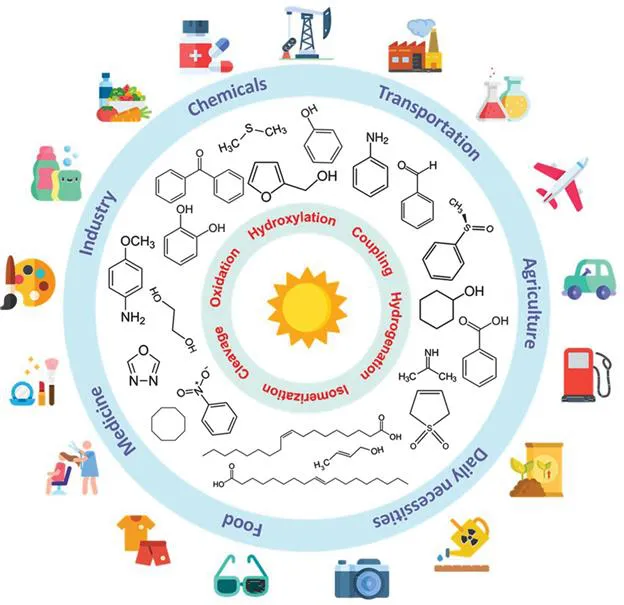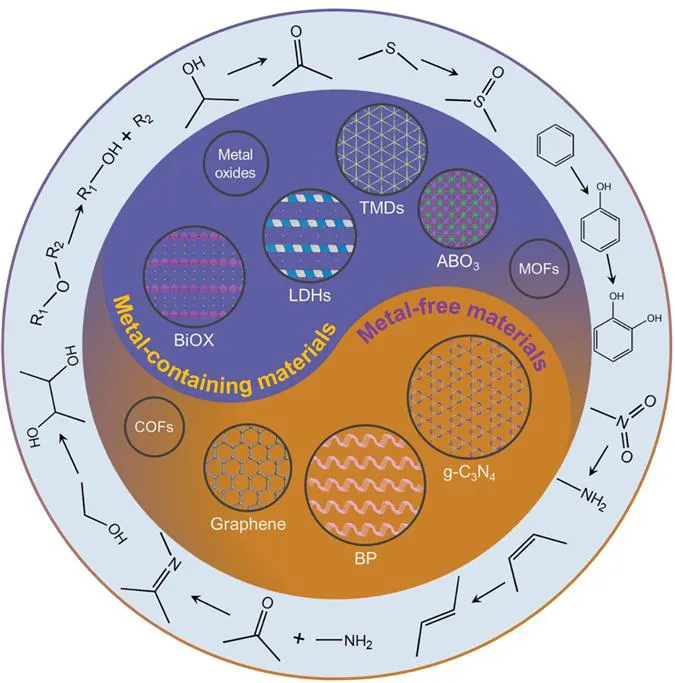
- 304 pages
- English
- ePUB (mobile friendly)
- Available on iOS & Android
Photocatalysis Using 2D Nanomaterials
About this book
Two-dimensional (2D) materials for photocatalytic applications have attracted attention in recent years due to their unique thickness-dependent physiochemical properties. 2D materials offer enhanced functionality over traditional three-dimensional (3D) photocatalysts due to modified chemical composition and electronic structures, as well as abundant surface active sites. This book reviews the applications of 2D-related nano-materials in solar-driven catalysis, providing an up-to-date introduction to the design and use of 2D-related photo(electro)catalysts. This includes not only application areas such as fine chemicals synthesis, water splitting, CO2 reduction, and N2 fixation, but also catalyst design and preparation. Some typical 2D and 2D-related materials (such as layered double hydroxides (LDHs), layered metal oxides, transition metal dichalcogenide (TMDs), metal–organic frameworks (MOFs), graphene, g-C3N4, etc.) are classified, and relationships between structure and property are demonstrated, with emphasis on how to improve 2D-related materials performance for practical applications. While the focus of this book will primarily be on experimental studies, computational results will serve as a necessary reference. With chapters written by expert researchers in their fields, Photocatalysis Using 2D Nanomaterials will provide advanced undergraduates, postgraduates and other researchers convenient introductions to these topics.
Frequently asked questions
- Essential is ideal for learners and professionals who enjoy exploring a wide range of subjects. Access the Essential Library with 800,000+ trusted titles and best-sellers across business, personal growth, and the humanities. Includes unlimited reading time and Standard Read Aloud voice.
- Complete: Perfect for advanced learners and researchers needing full, unrestricted access. Unlock 1.4M+ books across hundreds of subjects, including academic and specialized titles. The Complete Plan also includes advanced features like Premium Read Aloud and Research Assistant.
Please note we cannot support devices running on iOS 13 and Android 7 or earlier. Learn more about using the app.
Information
1.1 Introduction


1.2 Selective Oxidation Reactions

1.2.1 Selective Oxidation of Alcohols
1.2.1.1 The Development of Selective Oxidation of Alcohols
Table of contents
- Cover
- Title
- Copyright
- Contents
- Chapter 1 Recent Developments and Perspectives on Solar-driven Fine Chemicals Synthesis: From the Reaction System to 2D Photocatalysts
- Chapter 2 Opportunities for Ultrathin 2D Catalysts in Promoting CO2 Photoreduction
- Chapter 3 Photocatalysis by Graphenes
- Chapter 4 2D Inorganic Nanosheet-based Hybrid Photocatalysts for Water Splitting
- Chapter 5 2D Photocatalytic Materials for Environmental Applications
- Subject Index